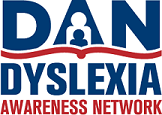eida.org
eida.org
People with dyslexia can also have problems with spoken language, even after they have been exposed to good language models in their homes and good language instruction in school. They may find it difficult to express themselves clearly, or to fully comprehend what others mean when they speak. Such language problems are often difficult to recognize, but they can lead to major problems in school, in the workplace, and in relating to other people. The effects of dyslexia can reach well beyond the classroom.
Dyslexia can also affect a person’s self-image. Students with dyslexia often end up feeling less intelligent and less capable than they actually are. After experiencing a great deal of stress due to academic problems, a student may become discouraged about continuing in school.
eida.org
Dyscalculia – a mathematical disability in which a person has unusual difficulty solving arithmetic problems and grasping math concepts.
Dysgraphia – a condition of impaired letter writing by hand—disabled handwriting. Impaired handwriting can interfere with learning to spell words in writing and speed of writing text. Children with dysgraphia may have only impaired handwriting, only impaired spelling (without reading problems), or both impaired handwriting and impaired spelling.
Attention Deficit Disorder (ADD) and Attention Deficit Hyperactive Disorders (ADHD) can and do impact learning but they are not learning disabilities. An individual can have more than one learning or behavioral disability. In various studies as many as 50% of those diagnosed with a learning or reading disability have also been diagnosed with ADHD. Although disabilities may co-occur, one is not the cause of the other.
eida.org
eida.org
eida.org
We recommend finding an Orton-Gillingham, language-based instructional program that is multisensory, structured, sequential, and cumulative.
Request accommodations in school, including:
- Extended time on tests and homework
- Word Banks (Word banks provide the support learners with dyslexia need with new or difficult words, reducing the learning curve often associated with introducing new vocabulary)
- Have tests and homework assignments read aloud
- Option of delivering oral reports, instead of written
- Leniency on grading grammar and spelling errors
We’re here to help you get started. Call the Dyslexia Awareness Network at 309-679-0788 with any questions.
- Very good at and find enjoyment in solving puzzles, which could be helpful in doing work as an administrator or in mechanics / engineering
- Talented at building models, which can be applied to becoming an architect or engineer
- May excel in art, music, or athletics, which are traits of many actors, musicians and athelets
- Often have great imaginations, like inventers, entrepreneurs and authors
- The ability to figure things out, which doctors and lawyers do everyday
- Excellent comprehension of stories read or told to them, which are very similar to journalists and radio announcers
Some famous, successful people with dyslexia include:
* Pablo Picaso * Thomas Edison * Albert Einstein * Leonardo da Vinci
* Erin Brockovich * Anderson Cooper * Tim Tebow * Jay Leno * Charles Schwab (…just to name a few!)
Dyslexia checklists can help in the initial inquiry, but a thorough educational evaluation is needed to determine a child’s learning ability or disability.
School evaluations done for IEP’s are an option that the center accepts as long as there is some kind of intelligence testing included.
The evaluation typically includes the following:
- Intellectual and academic achievement testing
- Receptive (listening) and expressive language skills
- Phonological skills; phonemic awareness
- Rapid naming of letters and numbers
- Read lists of words in isolation and in context
Call the Dyslexia Awareness Network at 309-679-0788 with any questions.
